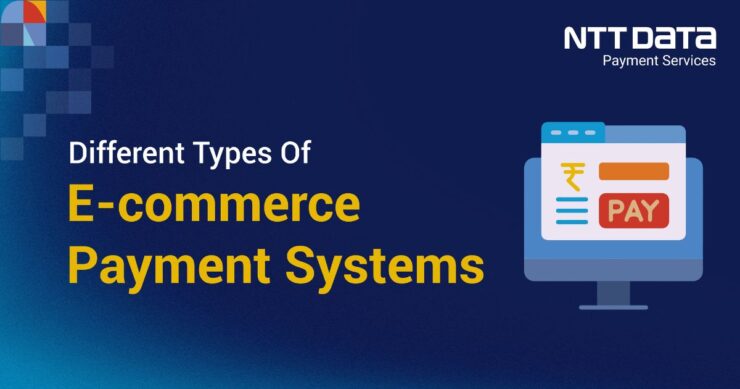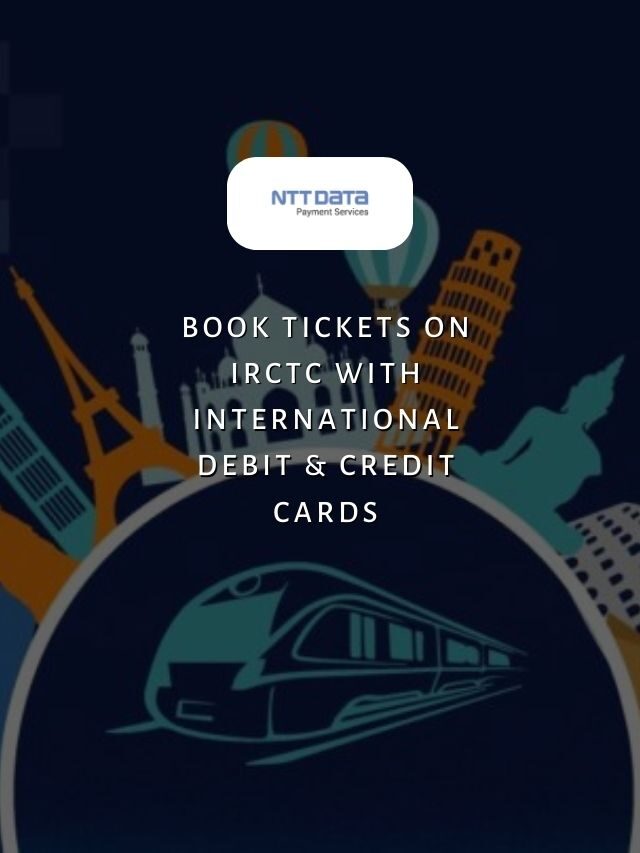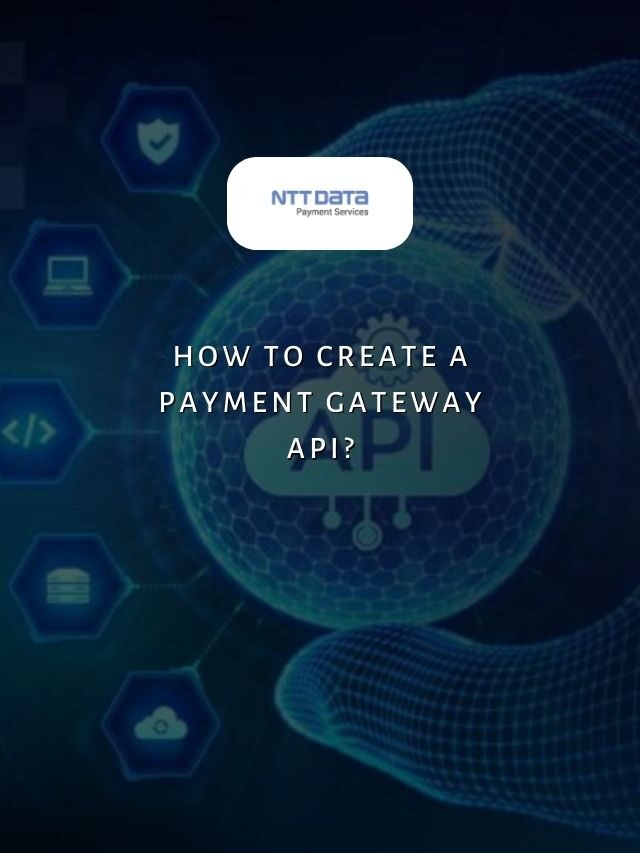
Table of Contents
- 1 Understanding E-commerce Payment Systems
- 2 Recent Web Stories
- 3 What are the Different Types of E-Commerce Payment Systems?
- 4 8 Key Features of E-Commerce Payment Systems
- 5 Accept Online Payments Seamlessly with NTT DATA Payment Services
- 6 Securing Your Checkout Experience and Business Growth with Payment Systems
E-commerce payment methods have become increasingly diverse, catering to the different needs and preferences of online shoppers. In this blog, we will explore the different types of e-commerce payment systems and their key features.
Understanding E-commerce Payment Systems
As consumer preferences and shopping habits continue to shift from traditional credit and debit card payments to innovative mobile wallets and more, e-commerce merchants must stay informed about the different types of payment systems available to provide a seamless and secure checkout experience for their customers.
E-commerce companies must maximise their payment infrastructure and meet the varied demands of their target audience by making informed judgements based on their knowledge of the advantages, disadvantages, and specific features of each payment option.
Understanding the different types of payment systems is essential for businesses to provide customers with a seamless and secure checkout experience.
What are E-Commerce Payment Systems?
E-commerce payment systems are electronic methods that facilitate online transactions without the need for physical money or cash. These systems enable secure, convenient, and efficient payment processing for e-commerce businesses and their customers.
Recent Web Stories
What are the Different Types of E-Commerce Payment Systems?
There are 5 common types of e-commerce payment systems.
1. Credit and Debit Cards
Credit and debit card payments are two of the most widely accepted e-commerce payment methods. They provide a secure and convenient way for customers to make purchases online, with the added benefit of chargeback protection and fraud monitoring.
Credit cards allow customers to make purchases on credit and pay off the balance over time. This can be particularly beneficial for larger purchases or for customers who prefer to manage their finances more flexibly. On the other hand, debit cards are directly linked to a customer’s bank account, allowing them to make payments using the funds available in their account.
2. Mobile Payments
Mobile wallets allow customers to make seamless and secure payments using their smartphones or other mobile devices. Mobile payments are getting more popular in the e-commerce market, as they offer a convenient and frictionless checkout experience.
Consumers can simply tap their smartphone or wave it near a payment terminal to complete a transaction without the need to fumble with physical cards or cash. These mobile payment solutions often integrate with loyalty programs, coupons, and other value-added services, further enhancing the customer experience.
3. Pay Later
Pay Later services have become increasingly popular as they allow customers to purchase items and pay for them in instalments, often interest-free, providing a more flexible payment option. Pay Later arrangements typically offer customers the ability to pay for their purchases over a defined period, such as 30 days or in 3-4 instalments.
This model is particularly appealing to younger consumers who may not have access to traditional credit or prefer to spread out their payments. The payment partner, rather than the e-commerce store, bears the risk from the customer, allowing businesses to receive the full payment upfront.
4. Bank Transfers
Bank transfers, such as direct deposit or wire transfers, offer customers a secure and reliable way to make payments directly from their bank accounts. This payment method is often preferred for larger purchases or customers who prefer to avoid using credit or debit cards.
From the business perspective, bank transfers offer several advantages, including lower transaction fees compared to credit card payments and the ability to receive funds directly in the merchant’s bank account.
Additionally, bank transfers provide a level of trust and credibility, as customers are required to authenticate their identity and access their bank accounts to complete the payment.
5. E-Wallets
E-wallet services often offer additional features, such as fraud protection and the ability to make cross-border payments. These virtual platforms allow customers to securely store their payment information, including credit/debit cards, loyalty cards, and even digital coupons, in a convenient location.
E-wallets offer a range of benefits, such as a streamlined checkout experience, and they also include additional features, such as transaction tracking and budgeting tools.
Additionally, e-wallets can provide valuable insights into customer spending habits, enabling businesses to better understand their target audience and tailor their marketing and sales strategies accordingly.
8 Key Features of E-Commerce Payment Systems
The following are the 8 essential features of e-commerce payment systems which you should consider when choosing one.
1. Security and Fraud Prevention
Ensuring the security of customer data and preventing fraud are crucial priorities for e-commerce businesses. Reputable payment service providers offer robust security measures and fraud detection capabilities to protect both businesses and customers.
2. Accessibility and Convenience
E-commerce businesses should strive to offer a diverse range of payment options to cater to the varied preferences and needs of their customers. By providing a seamless and convenient checkout experience, businesses can improve customer satisfaction and increase conversion rates.
3. Global Reach
As e-commerce continues to expand globally, businesses should consider payment systems that support cross-border transactions and accommodate customers’ payment preferences in different regions.
4. Cost-Effectiveness
The costs associated with payment processing, including transaction fees and infrastructure requirements, should be carefully evaluated by e-commerce businesses. Selecting the right payment service provider can help optimise costs and improve profitability.
5. Automated and Quick Payment Processing
E-commerce payment systems should offer automated and efficient payment processing, ensuring a seamless checkout experience for customers and reducing the administrative burden on businesses.
6. Reliability
E-commerce payment systems must be reliable. Downtime or malfunctions in the payment system can result in lost sales and erode customer trust, significantly impacting an e-commerce business’s overall success. Reliable e-commerce payment systems ensure that transactions are processed accurately and consistently, regardless of the volume or time of day.
7. Flexibility and Customisation
E-commerce payment systems should offer flexible payment options, customisable subscriptions, and multi-currency support to cater to the diverse needs of businesses and customers.
8. Detailed Reporting
Comprehensive reporting features, such as detailed transaction histories and analytics, can help e-commerce businesses track sales, monitor trends, and make informed decisions about their payment strategies.
Accept Online Payments Seamlessly with NTT DATA Payment Services
As a leading payment service provider in India, NTT DATA Payment Services is committed to empowering businesses and shaping the future of e-commerce payments. We offer the best POS systems and online payment solutions to help businesses of all sizes succeed in e-commerce.
NTT DATA Payment Services offers a complete payment solution to advance both your offline and online businesses from,
- Payment Gateway India
- POS machines
- IVR payments
- Mobile applications, and
- Bharat QR Scan and Pay
We ensure maximum comfort, convenience, and safety for all your payments.
Securing Your Checkout Experience and Business Growth with Payment Systems
As e-commerce continues to grow, the diversity and sophistication of payment systems will only increase. By understanding the different types of e-commerce payment systems and their unique features, e-commerce merchants can make informed decisions to optimise their payment infrastructure, reduce costs, and improve customer satisfaction.
As the industry continues to innovate, the future of e-commerce payments promises to be even more exciting and transformative, with new solutions emerging to meet the ever-changing needs of both businesses and consumers.
| Also, you can get frequent updates on nttdatapayments Instagram page. |
Types of E-commerce Payment Systems: FAQs
1. What are the most common types of e-commerce payment systems?
The most common types of e-commerce payment systems in 2024 include credit and debit cards, mobile payments, pay-later () services, bank transfers, and e-wallets. These payment methods provide a diverse range of options to cater to the varied preferences and needs of online shoppers.
2. Why are multiple payment options important for e-commerce businesses?
Offering multiple payment options is crucial for e-commerce businesses to provide a seamless and convenient checkout experience for their customers. By catering to diverse payment preferences, businesses can improve accessibility, increase conversion rates, and reach a wider customer base.
3. How do e-commerce payment systems ensure security and prevent fraud?
Reputable payment service providers offer robust security measures and fraud detection capabilities to protect businesses and customers. These include features like encryption, tokenisation, and advanced risk management algorithms to mitigate the risk of fraudulent activities.
4. What are the cost considerations for e-commerce businesses when selecting payment systems?
E-commerce businesses should carefully evaluate the costs associated with payment processing, including transaction fees and infrastructure requirements. Selecting the right payment service provider can help optimise costs and improve the overall profitability of the business.
5. How are emerging technologies shaping the future of e-commerce payments?
In the e-commerce payment sector, emerging technologies like mobile wallets and cryptocurrencies are progressively becoming more common. These innovative solutions offer increased security, convenience, and global reach, and are expected to continue transforming the way customers make online purchases in the years to come.







